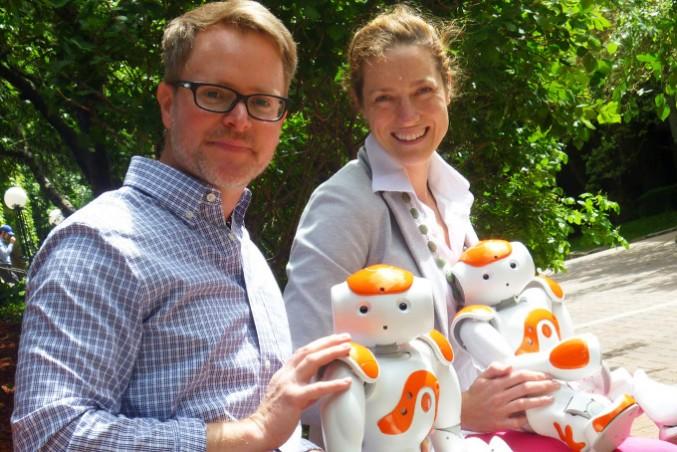By Emma McIntosh
Two Ryerson professors and their robots, Max and Rob, are on a mission to understand children with autism.
Stéphanie Walsh Matthews and Jamin Pelkey from the languages, literatures and cultures department are involved in a research project focused on the development of technology in special education. The robots, known as NAOs, are created by Aldebaran Robotics.
“Through human-robot interaction, we’re trying to collect speech information from children with autism,” Walsh Matthews said. The study is usually done in therapists’ offices inside the participants’ schools.
Programmed to act out emotions, recognize faces and participate in educational games, NAOs are being tailored as a tool for children with autism.
Therapists, researchers and robot technicians observe the child interact and play with the NAOs.
“It’s possible that children will provide more speech data with a robot that they wouldn’t be willing to provide with ordinary conversation partners… possibly because they feel less judgment for what they say,” said Pelkey. “The robot is humanoid, but smaller than most children — they interact with the robot on a different plane.”
Pelkey recalled one session in particular where one participant’s progress really began to show. “When a child entered the room, he didn’t address any of the adult observers, he focused in on the robot and said in a hushed tone, ‘Hi, robot.’”
There is some concern however, that the study could backfire. It’s a potential risk that a child may prefer to talk to a robot instead of a human being.
But Matthews said that previous research in the field demonstrated that children who took the first steps to interact with the robots are 30 per cent more willing to participate in human interaction.
Matthews and Pelkey are currently focused on collecting data from their research and have no imminent end date for their experiments.
“We want to let the data do the talking,” Pelkey said.











1 Pingback